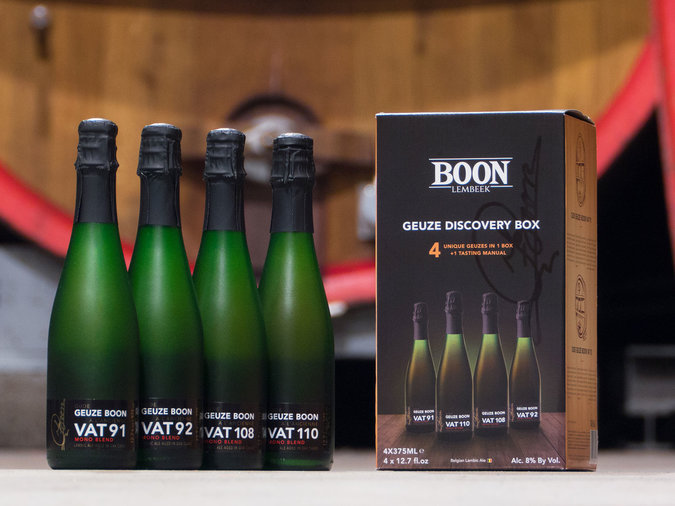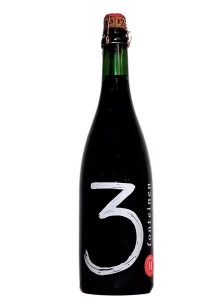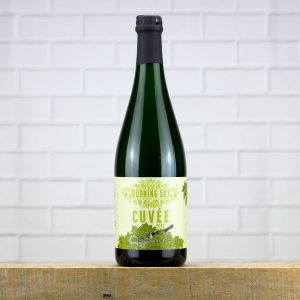
Spontaneous Fun
Lambic-style beers, in the form of a spontaneously fermented beverage, can loosely be traced back to approximately 50-100BC thanks to Roman historians marching with the army, near what is the modern Belgian/German border. The Breweries that survive today often have long, centuries-old history, and have experienced the changes in public tastes and political climates. Some have adapted to change, attempting to appeal to new audiences, whilst others have doggedly stuck to tradition. But tastes change, and there is increasing interest in the unsweetened, artisan styles of the traditional lambic from the Pajottenland.
In the 20th century there were hundreds of lambic brewers and blenders, whilst contemporarily these have been reduced to nine lambic brewers, who also blend, and four lambic blenders. The renewed surge and interest in beer from the late 1990s-early 2000s, has coincided with increasing curiosity in lambic as a truly unique and distinctive style. In addition, many brewers outside of the area South-West of Brussels, Belgium, have started to experiment with their own styles of wild fermentation, and blended beers. Though it is fair to say that there is still nothing quite like a true lambic.
Brewing a lambic: It’s all in the yeast
There are five main ingredients: pale two-row malt (2/3 of the malt bill), unmalted wheat (1/3 of the malt bill), aged hops, water, and local native microbes that drive the spontaneous fermentation. Lambic wort (liquid extracted from the mash) is produced using turbid mashing, which involves the preservation of starchy and protein-rich wort, in order to provide the food for the various microbes present in the lengthy lambic fermentation. This then undergoes a longer than usual boil, and is hopped using aged hops, as a preservation method. It is then transferred to a koelschip (to cool), which are effectively swimming pools full of beer, at which point the beer starts to become infected with the yeasts. Unlike most other beer styles, which use farmed or packaged yeasts, lambic relies solely on spontaneous fermentation, utilising microbes and yeasts that occur naturally in the atmosphere.
Finally, it is transferred to large oak barrels to age for up to three years. This is where the fun starts, albeit drawn out and lengthy, as the beer starts to grow more sour and funky. Once suitably barrel-aged, it may undergo further ageing on fruit or blended and allowed to re-ferment and develop in bottle.
A true terroir beer
Of all the beer styles that exist, lambic probably makes the strongest case for being the truest expression of terroir, in terms of its geographic location and those that brew it. Whereas many other modern beers take influence and ingredients from the world over, lambic is truly a product of place, with no two blenders or brewers able to make the same beer. Whilst some producers don’t even brew their own beer, rather they buy inoculated wort from other breweries and age it themselves, then blend in order to create a truly unique beer.
The Beers
Bouwerij Boon
As the biggest “oude”- focused brewery and blender in the world, Boon is the touchstone for geuze and other lambic styles all over the world. Still brewing under the watchful eye of the legendary Frank Boon – a diehard traditionalist, but always willing to experiment. The brewery continues to be at the front and centre of lambic production.
Geuze Mariage Parfait
A blend of three year old lambics, with a small percentage of young lambic are used to create the “perfect marriage”! A refined beer, exuding flavours of tangerine, lime, hay and a slight vanilla edge, a refreshing sourness, and a long funky/dusty finish. Truly one of the most elegant and refined lambics, a fantastic example of what the style can achieve.

Oude Gueuze, a l’ Ancienne
A blend of 1, 2, or 3 year old lambics. This has a very fresh style where citrus and funky/farmyard notes dominate, but with a lovely balance of apple and pear adding a subtle sweetness to the sharper sour edge. A lingering tangy finish with touches of lemon peel and sherry vinegar, but with a great lightness of touch. A brilliant, easy-to-find and affordable geuze.
Geuze Discovery Box
A fantastic chance to try some incredibly unique beers from Frank Boon and co. 4 different single foudre (barrel) bottlings allow the drinker to explore the subtleties that the master of lambic is able to achieve.
3 Fonteinen
This is the youngest lambic brewery making some of the world’s most sought-after lambics. They have quickly cemented themselves as producing beers of exceptional quality. This brewery enjoys experimentation as much as its quest for the perfect geuze.
Oude Geuze
A blend of 1, 2, and 3 year old lambics aged for at least a year in bottle before release. A delightful medium bodied beer with notes of fresh green apple, ripe apricot, and hints of funky cheese and Brett yeasts, and an extraordinarily lively carbonation. It is a masterfully complex beer which is highly refreshing and makes for the perfect appetiser on a warm summers evening.
Hommage
A fruited unsweetened style made with 30% raspberries from Pajottenland, and 5% sour cherries from near the brewery. It has an intoxicating aroma of ripe raspberries and sour cherries with an underlying funky, earthy note. Being unsweetened it still retains the classic sour/tart flavours with subtle hints of sour citrus alongside a musty, woody quality. It is exceptionally balanced and very smooth – a true testament to this brewery’s consideration as one of the best in the world.

Tilquin
As the newest blender in the Pajottenland, Pierre Tilquin has gained acceptance and praise from within the tight group that makes up lambic producers. He makes fantastic geuze and fruit lambics including a beer made with Belgian prunes.
Rullquin (Collaboration with La Rulles brewery)
A blend of 7/8 Rulles Brune (Stout de Gaume) and 1/8 of a blend of 1 year old lambics which has then matured in oak barrels for 8 months. It makes for a fascinating combination with aromas of soft sour cherry, oak and roasted malts and funky/acidic, spicy note. The palate gives more dark stone-fruit notes with a great depth of leathery and earthy notes from the yeasts. The medium body and carbonation tie it all up for an incredibly balanced and complex beer. Tilquin is as interesting as ever and this beer is a great demonstration of the skill these blenders possess.
Burning Sky
A relatively new brewery, located in the South Downs in East Sussex, they have gained a reputation for creating Belgian inspired beers. They are the first in the UK to install a koelschip to produce spontaneously fermented beers.
Cuvée
A blend of their Saison á la Provision from Foudre No.1 and a number of ex-Chardonnay barriques, it is then blended with a large portion of Belgian lambic. It shows well composed aromas of sour lambic and spicy saison, followed up with delightfully fresh elderflower, gooseberry and grapefruit notes. It has a lively but balanced carbonation giving the beer a lightness of touch whilst still retaining its complexity. This is a truly stunning offering from one of the UK’s best and most forward thinking breweries.
